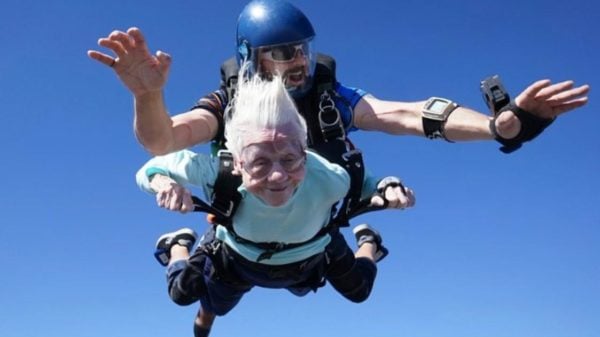The Grand Canyon continues to reveal fascinating paleontological discoveries. In 2016, Allan Krill, a geology professor from Norway, made an incredible discovery while hiking with his students. They stumbled upon boulders containing fossilized footprints lying nonchalantly along the trail. The natural rocks held compelling stories of ancient life on Earth, waiting to be unveiled.
Intrigued by the discovery, Krill immediately sent a photo to his colleague, Stephen Rowland, a paleontologist from the University of Nevada Las Vegas. It turns out that these tracks were not just an ordinary finding; they represent the oldest vertebrate tracks ever recorded within the magnificent Grand Canyon.
<iframe width=”100%” height=”100%” frameborder=”0″ allowfullscreen=”true” src=”https://www.youtube.com/embed/oYkwvch2DA0?rel=0″></iframe>
These ancient footprints hold more than just historical significance. According to Rowland, they are the oldest vertebrate tracks found in the Grand Canyon, a location famous for its abundant fossil discoveries. These tracks provide a valuable window into the lives of early egg-laying animals, including reptiles, and offer valuable insights into the evolution of vertebrates.
The footprints found within the Manakacha Formation are preserved safely within the boulders. Through careful analysis, researchers have determined that these tracks date back 313 million years. The cliffs hold a treasure trove of history. They provide glimpses into a time long gone, filled with mysteries and wonders.
The footprints discovered on the slope of a sand dune are more than just ancient imprints. They tell the story of two different animals crossing the terrain. The arrangement of the footprints is particularly fascinating, showcasing a distinctive walking pattern known as lateral-sequence walk. This type of walk involves the legs on one side moving in succession, with the hind leg followed by the foreleg, contrasting with the movement of the legs on the opposite side.
The detailed description of this primitive walking style offers valuable insights into the locomotion patterns of early vertebrates. It reveals a walking sequence that is still observed in the slow walks of present-day dogs and cats. This provides us with a glimpse into how vertebrate animals began to use this gait, filling a gap in our previous knowledge on the subject.
The fossilized footprints also offer a glimpse into the earliest encounters between vertebrates and dunes. The intricate patterns and remarkable preservation of these tracks have made studying their movements and behaviors possible. This allows us to imagine what life was like for these ancient creatures that lived 313 million years ago.
The Bright Angel Trail reveals tracks that provide a fascinating insight into the adaptation and interaction of early tetrapods with their environment. This discovery unveils a previously unknown chapter in evolutionary history, almost like witnessing these creatures dance on the ancient dunes.
This discovery holds significance beyond just the incredible age of the tracks. It provides valuable insights into the evolutionary advances made by early vertebrates. It’s akin to fitting together the puzzle pieces of life on Earth, allowing us to understand vertebrates’ developmental journey better. Stephen Rowland’s recognition of the footprints as the oldest evidence of vertebrate animals wandering the sandy dunes emphasizes the significance of this discovery. It serves as a reminder that the trails we traverse today were once walked by creatures beyond our full understanding.
Imagine going for a walk and unexpectedly stepping into the traces of a world that existed 313 million years ago! These ancient footprints provide a tangible link to our distant ancestors. They offer a vibrant glimpse into the biodiversity and ecological interactions of long-gone epochs. This discovery is exciting and serves as a reminder of the Grand Canyon’s valuable geological and paleontological legacy, patiently awaiting exploration. It offers a captivating story about our ancestral counterparts and provides insights into our planet’s fascinating journey of evolution.
The Grand Canyon holds many untold stories concealed within every rock and fossil. When a cliff collapse reveals these ancient artifacts, nature seems to beckon us to explore the historical record of our planet. The accidental discovery made by Allan Krill during a hike has unveiled a revolutionary revelation. It has prompted us to reflect on the countless untold stories that lie within the mysterious cliffs and formations of the Grand Canyon.


















